(note: unlike my other pages, with newest photos first, I will maintain this page sequentially, as it documents the discovery of a species new to science)
2010
These photos represent what is apparently an undescribed species of Spiketail from the Longleaf Pine region of deep east Texas. These specimens were photographed on 16 & 17 April 2010. The male pictured first was found at approximately 10:25 am on the 16th patrolling a stream trickle in a sunny pitcher plant bog on the slopes at the back of Boykin Springs Lake in northern Jasper County. Both Dad (Terry Hibbitts) and I got a nice series of photos. Initially, we thought it was just an aberrant Twin-spotted Spiketail (Cordulegaster maculata), with a bit more ringed pattern. However, this specimen was smaller than is typical for that species (at probably just over 2") and the eyes do not touch at the top of the head, which is characteristic in that species (only noticed when we examined the photos).
The second specimen was photographed on 17 April 2010 at 11:26 a.m. on an overcast morning. It was found foraging in a fire-managed longleaf pine area on a ridge within a couple hundred meters of a nearby pitcher plant seep. This location is approximately 0.5 mile to the N of the initial location. It was immediately apparent that the female shared the ringed pattern with the male. Also immediately noticeable was that its subgenital plate ("ovipositor") did not extend beyond the S10 abdominal segment. Also visible in the photos was the fact that eyes did not touch. This female appeared to be even smaller than the male.
Upon examination of the photos when we got home, the nearest I could come to similar species were the Brown Spiketail (C. bilineata) and Say's Spiketail (C. sayi), neither of which occur near to Texas (both east of the Mississippi River). However, this insect appears smaller than both, and its coloration and pattern combines features with both species (brown like C. bilineata and ringed much like C. sayi), as well as having features that they lack (most noticeably the blue eyes).
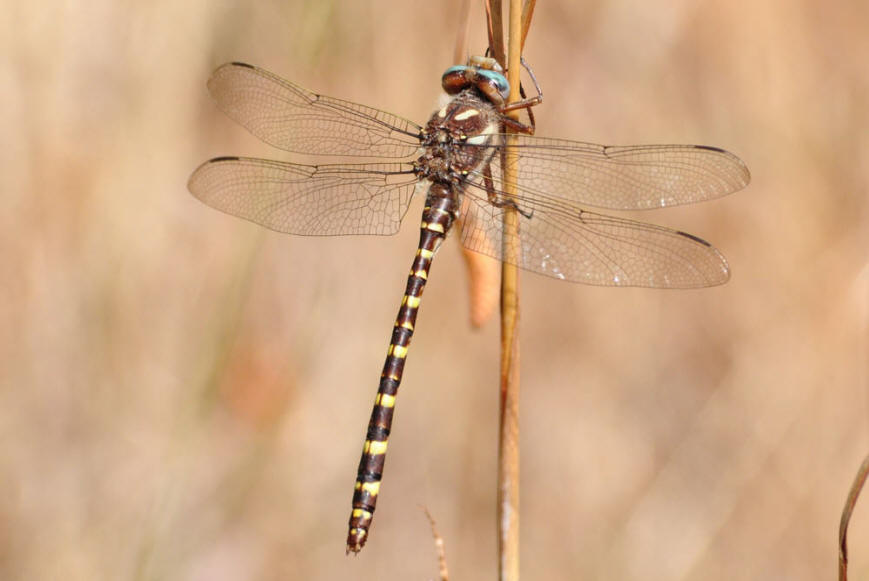
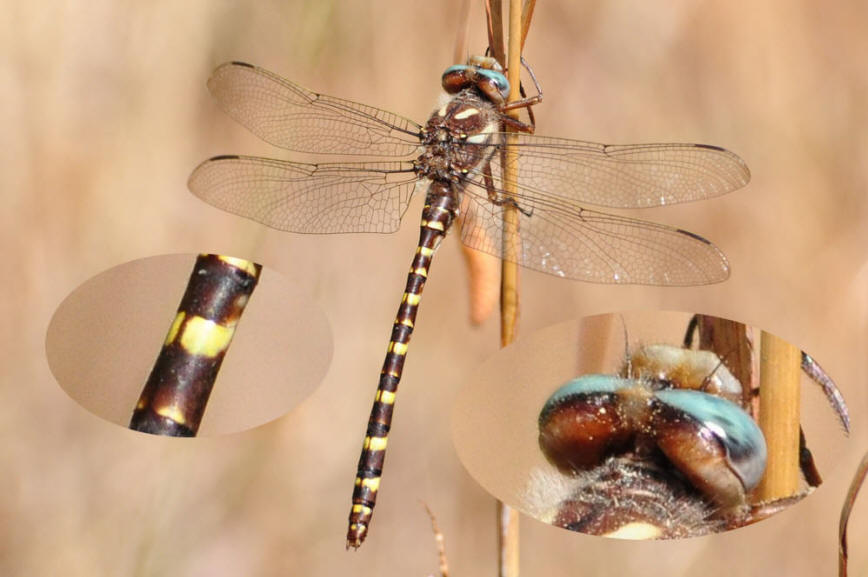

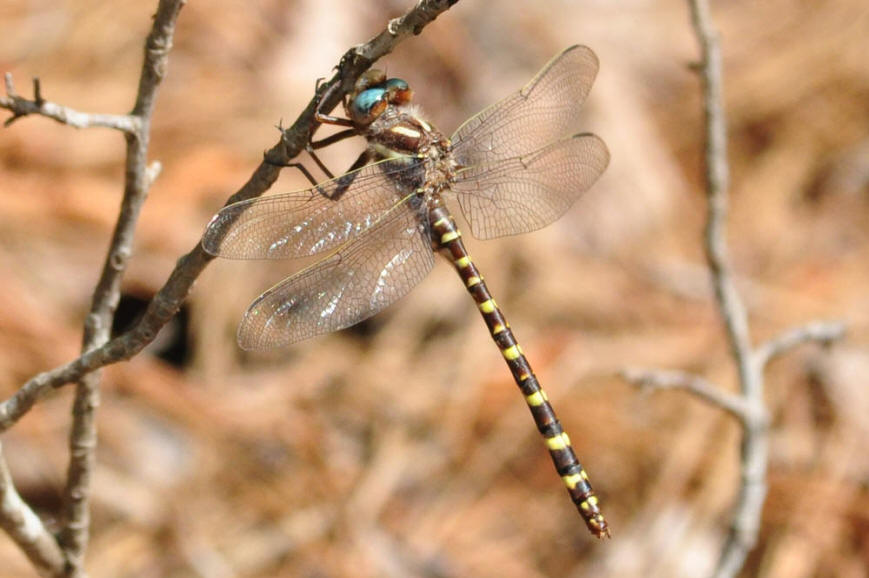
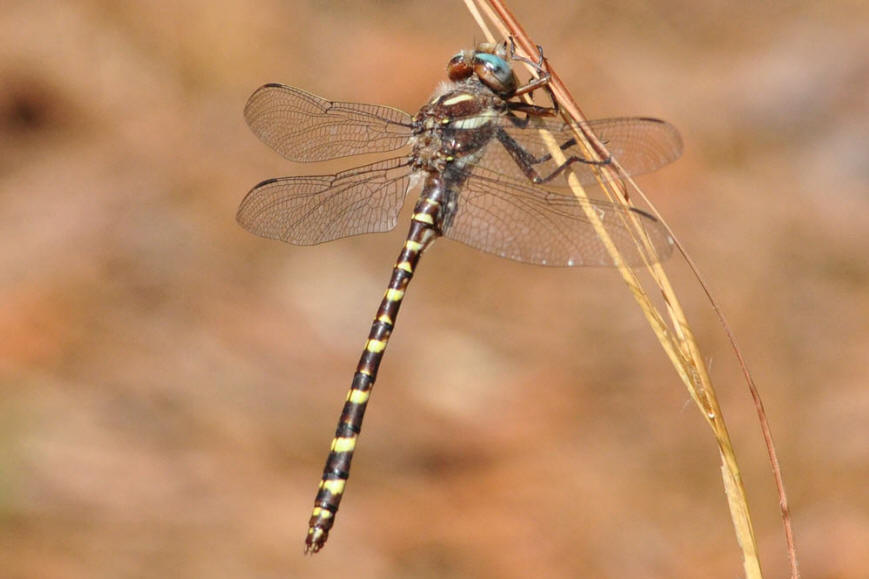
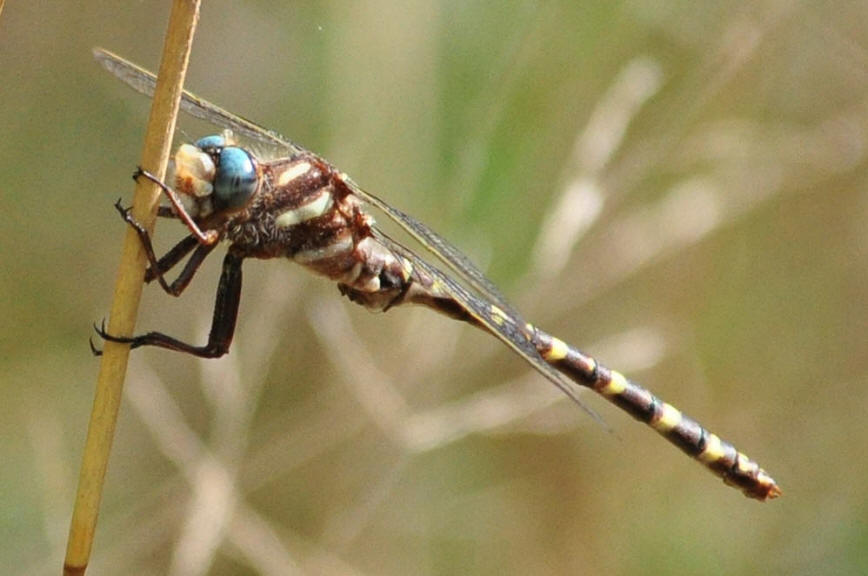
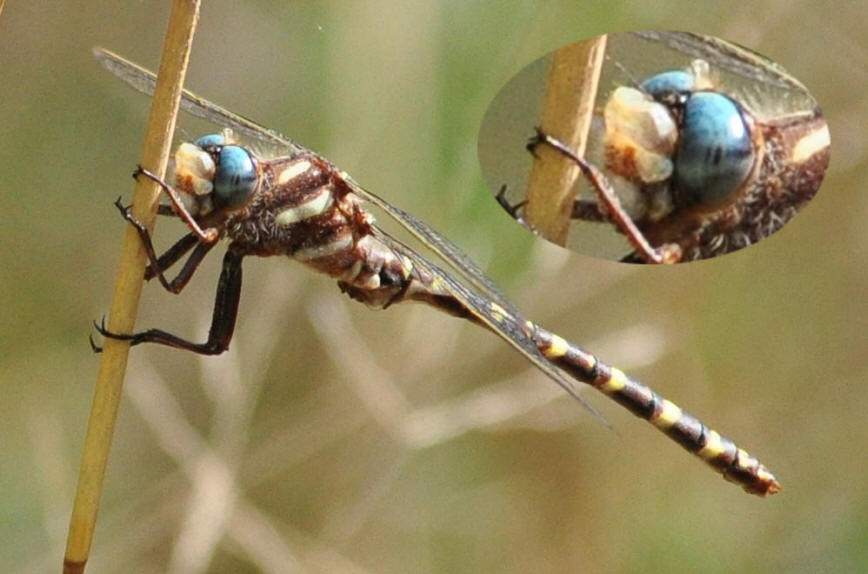
TEXAS: Jasper Co; Angelina National Forest, near Boykin Springs Lake - male - 16 April 2010
31.063495°N, 94.279479°W
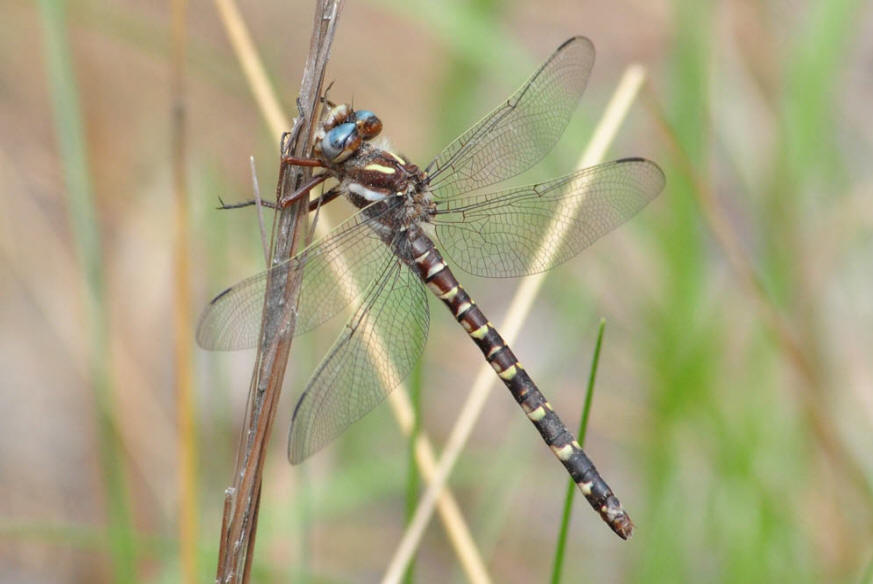
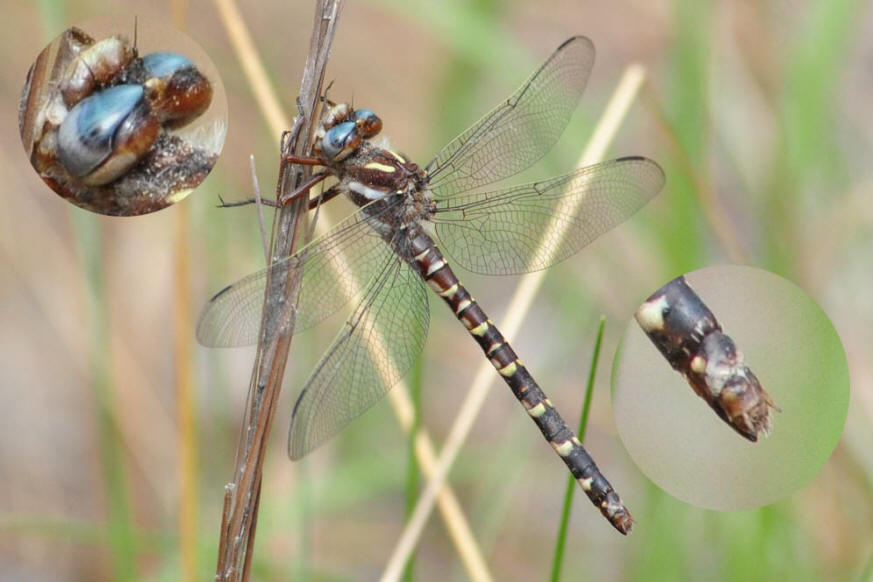
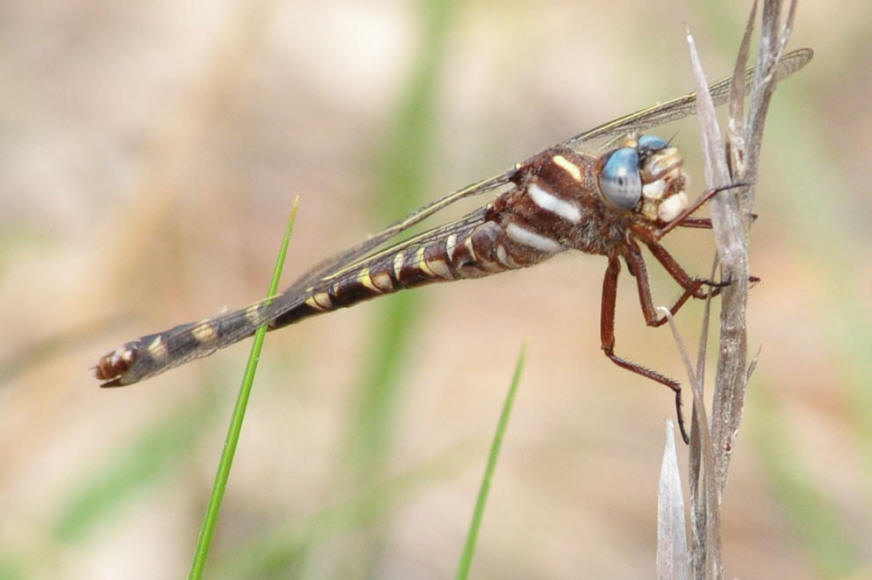

TEXAS: Angelina Co; Angelina National Forest, ca 0.7 mi N of Boykin Springs Lake - female - 17 April 2010
31.071453°N, 94.277070°W (approximate)
Photos of the specimens were sent to Dennis Paulson and John Abbott. Both suggested that it was very likely an undescribed species. Abbott almost immediately cut short a trip to the Lower Rio Grande Valley, driving from Starr County to Jasper in order to attempt to collect a specimen. On Wednesday, 4/21/10, the group (John Abbott, Nick Donnelly, Greg Lasley, and Martin Reid were successful in netting a male at the seep above Boykin Springs Lake. On Thursday, 4/22/10, Dad joined them and took them to the seep area off the Radio Tower Road north of Boykin Springs, and they were able to locate and photograph a female, which escaped netting. Later that same day, a male was located in the same area, and was successfully collected.
I took off work on Friday, and drove over the night of 4/22 to spend 4/23-25 searching the area for another specimen. I was met by rains on 4/23, although it cleared off by late afternoon. Dad & I did see two Arrowhead Spiketails (C. obliqua) but none of the new species. On Saturday, 4/24, I searched the area all morning, then joined Taylor Hall and Scott Wahlberg to search the Scrappen Valley site in Newton Co. Although the habitat looked promising, I was only able to locate a single specimen of Arrowhead Spiketail (C. obliqua) - this was a new county record. On 4/25, I started my search at the Boykin Springs seep. Found another promising seep nearby, but located no spiketails at either site. Searched a seep near the Red-cockaded Woodpecker trail on the Boykin Springs road, and located a female Arrowhead Spiketail (barely into Angelina Co, also a new county record). Finally, on a desperate last gasp search, I returned to the Radio Tower road, and shortly spotted a female of the new spiketail flying down the road, which I was able to successfully net and collect for a specimen.
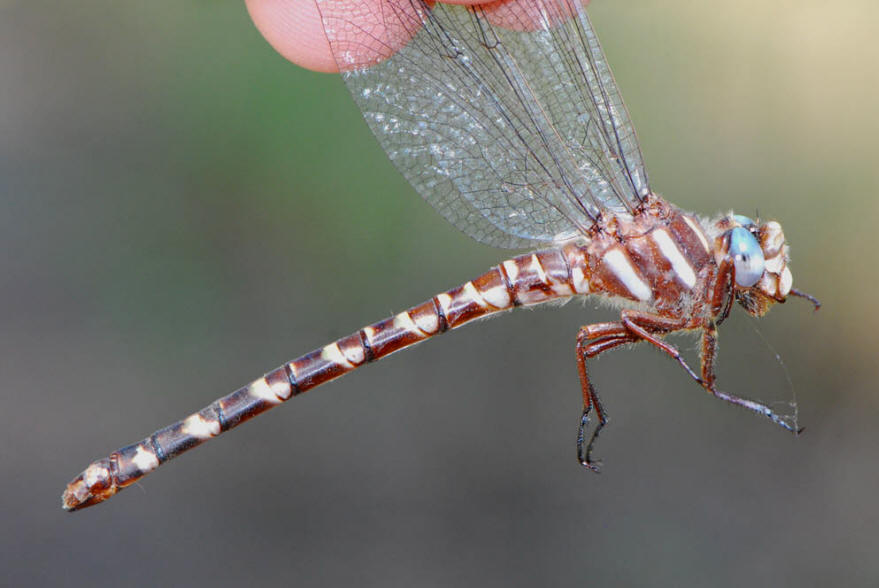
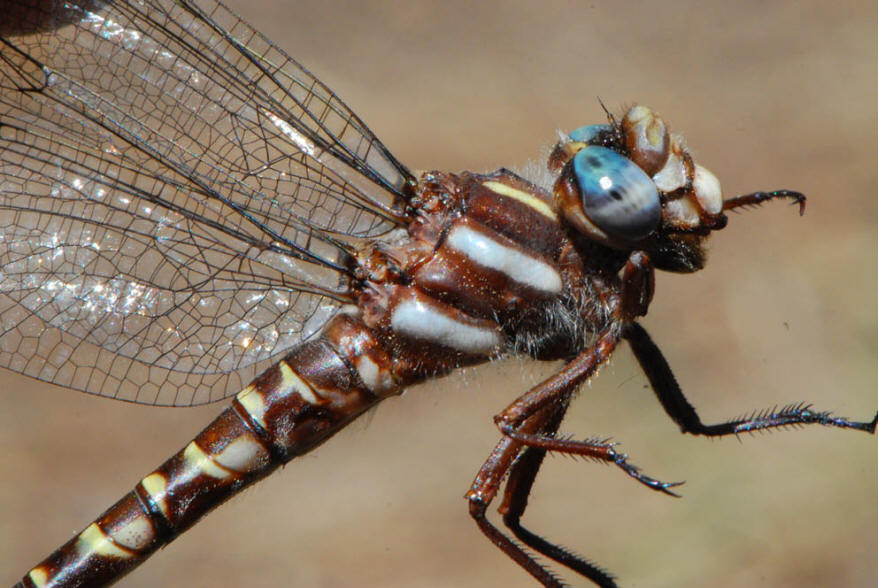
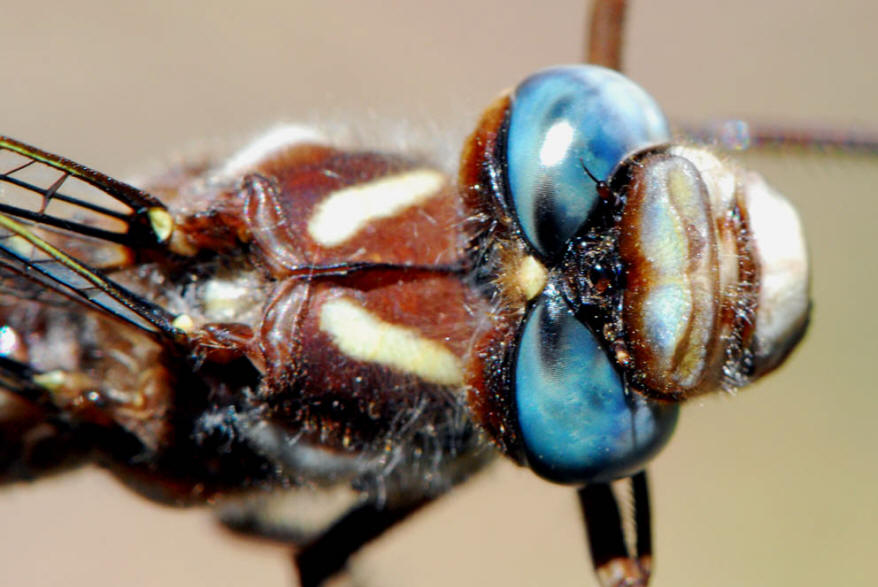
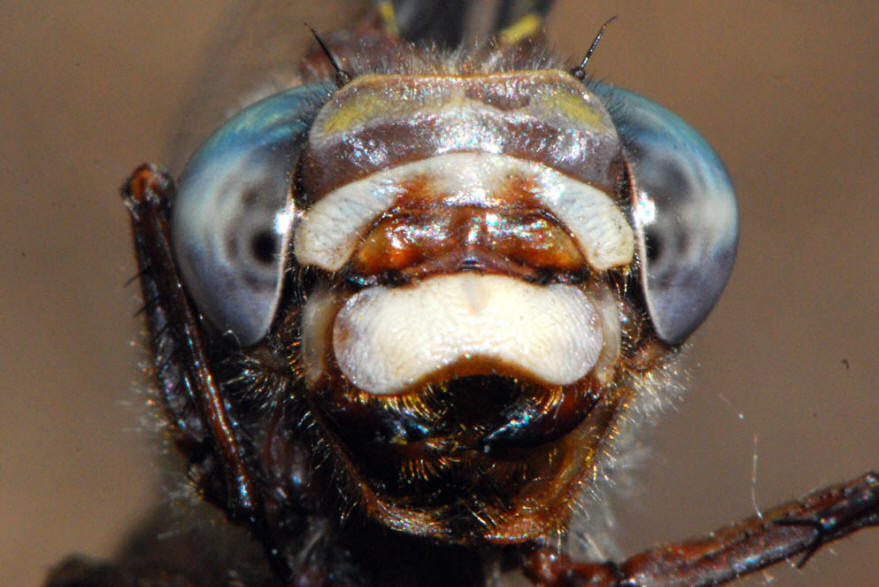
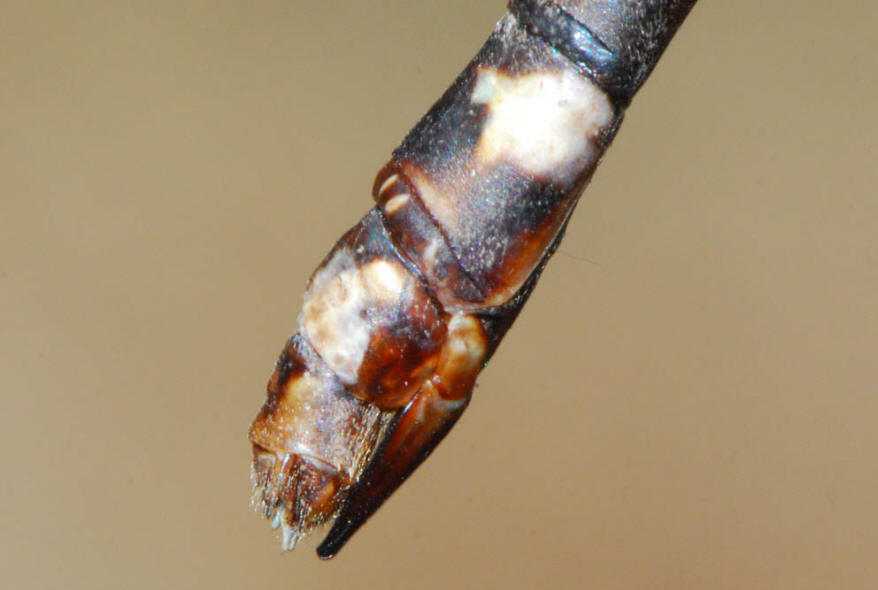
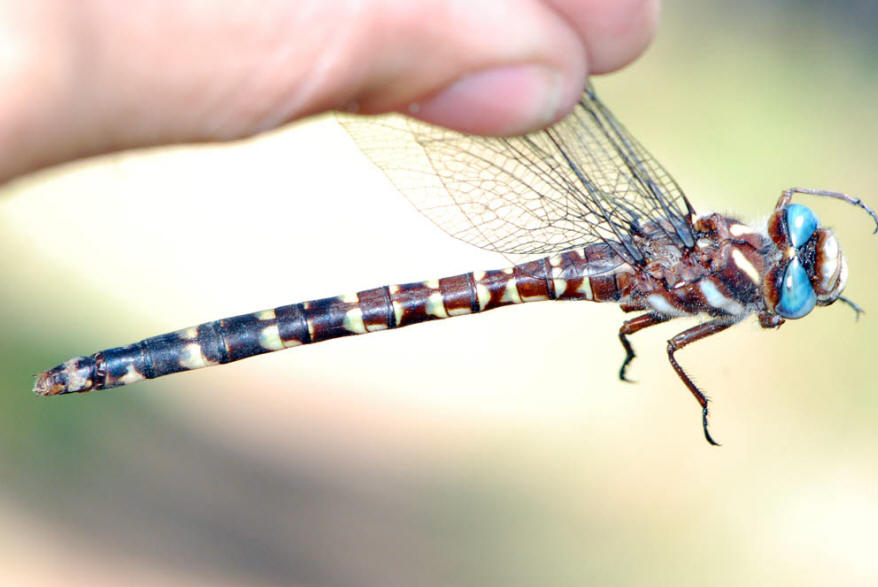
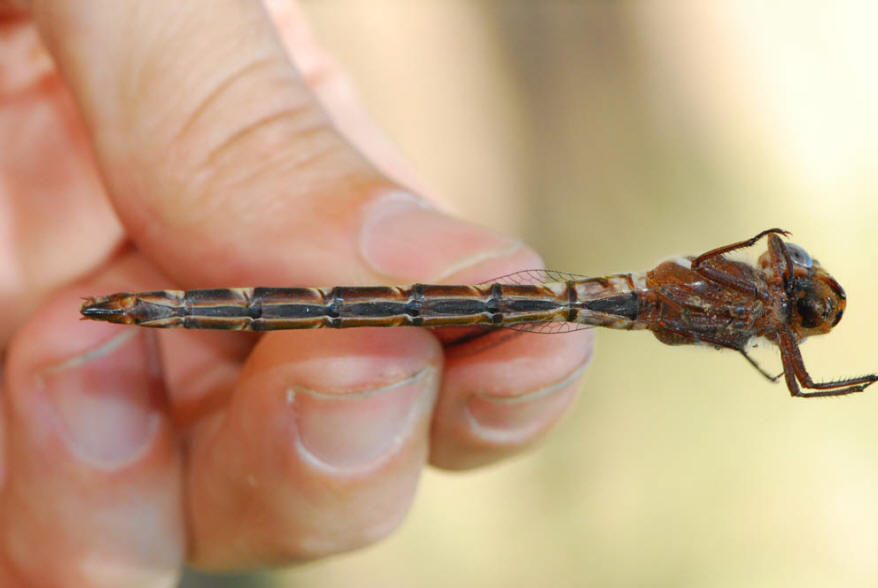
TEXAS: Angelina Co; Angelina National Forest, ca 0.8 mi N of Boykin Springs Lake - female - 25 April 2010
31.07361°N, 94.27974°W
collected and donated to Texas Natural History Collection
Interesting, two independent photo records have been submitted to Odonata Central of this species - one was found at the Gus Engling Wildlife Management Area in Anderson County by Gary Spicer on 4/12/10. The other was found on the Big Thicket Preserve's Pitcher Plant Trail in southern Tyler County on 3/29/09 by Rick Nirschl. Both were initially mis-identified as Twin-spotted Spiketails, and vetted as such, but with collection of specimens and our more extensive series of photos, these photos have been re-evaluated. See also Greg Lasley's account of their search here, as well as Martin Reid's account here.
2011
In March 2011, we resumed the search for this new species. I decided to start my search in similar habitats in Louisiana's Kisatchie National Forest. I began my spring break vacation by searching the Vernon Unit of the Kisatchie NF in Vernon Parish, Louisiana. On 13 March I searched bogs in the western portion of the National Forest, and found Bog JD 240, Drake's Creek South Bog, and LSU Area Bog 6-3a to possess seemingly suitable habitat, but discovered no Cordulegaster of any species. 14 March was rainy, but I met with Steve Shively (FS Biologist) and we searched Cooter's Bog for about an hour before the storm arrived. Cooter's also possesses seemingly suitable habitat, but weather conditions all but eliminated Odonate activity (we saw 1 Mantled Baskettail and 1 Variegated Meadowhawk before the rain began to fall). I then drove to the Middle Branch Bog in the Kisatchie District in Natchitoches Parish, mostly to check out the site, and found it to be a beautiful hillside bog, very similar to, but far more extensive than, similar bogs in the Boykin Springs Area.
15 March 2011 was scheduled to be my last day of efforts in Louisiana, and I again met Steve Shively at Cooter's Bog. We searched there for 2 1/2 hours, but found no Spiketails. I then left to go back to Middle Branch Bog, where I searched from 3:00-6:30 pm. There, I discovered a teneral male of the species, as well as observed 2 other, more mature specimens which I was unable to photograph or net. The not only represent the fourth known locale for this species, but also the first records of it for the state of Louisiana as well as the earliest date on record for the species (ties with a specimen collected the same day by John Abbott and Greg Lasley at Boykin Springs). Here is the series of photos of the Louisiana State Record for the "New Texas" spiketail.
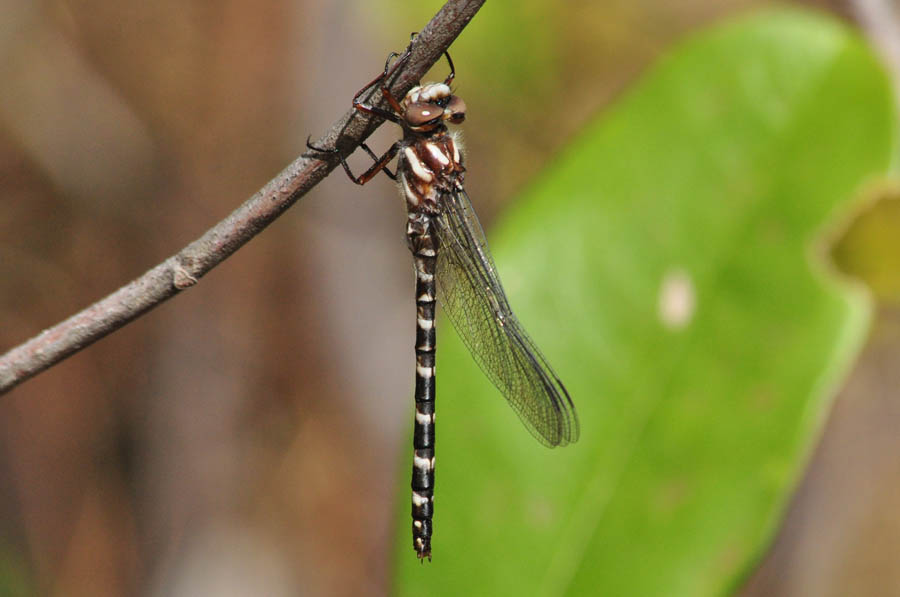
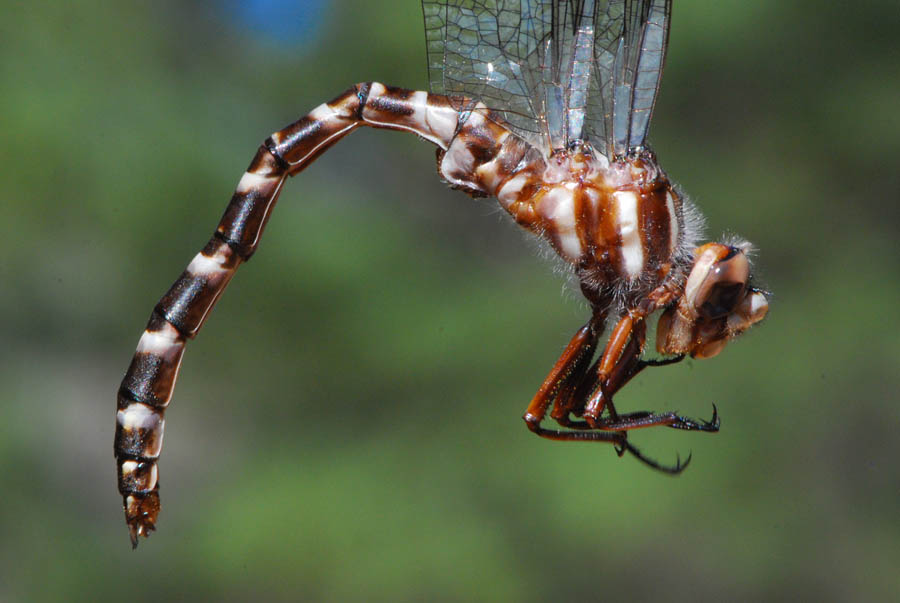
LOUISIANA: Natchitoches Parish; Kisatchie National Forest, Middle Branch Bog - teneral male - 15 March 2011
31.48353°N, 93.07568°W
On 16 March 2011, we were scheduled to meet with my parents at Boykin Springs, so Marla, Cheyenne, and I searched that area from just before noon until about 5:30 pm. Intermittent clouds limited ode activity at times, but we were able to photograph and collect a female specimen approximately 400 meters west of the type locality for this new species on the pipeline cut near Boykin Springs Lake.
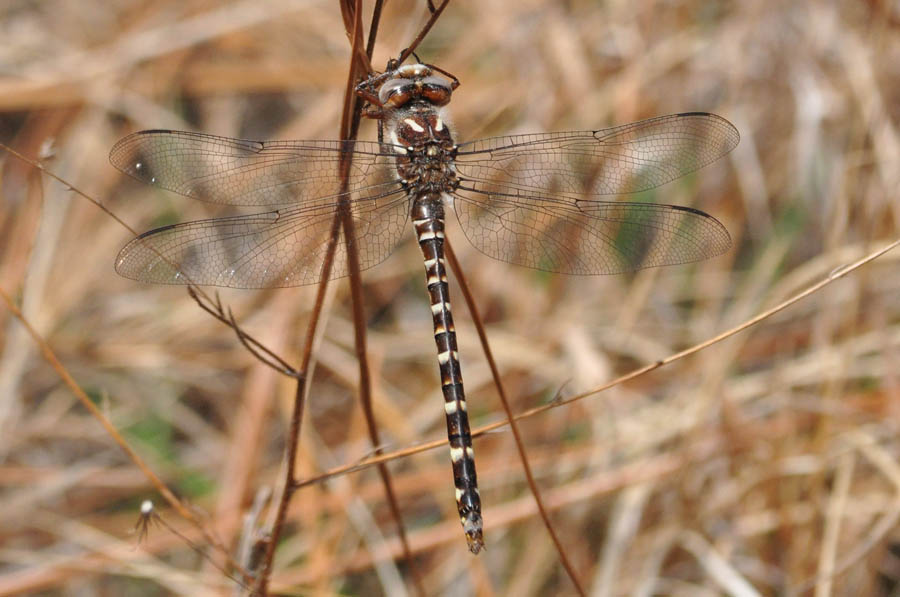
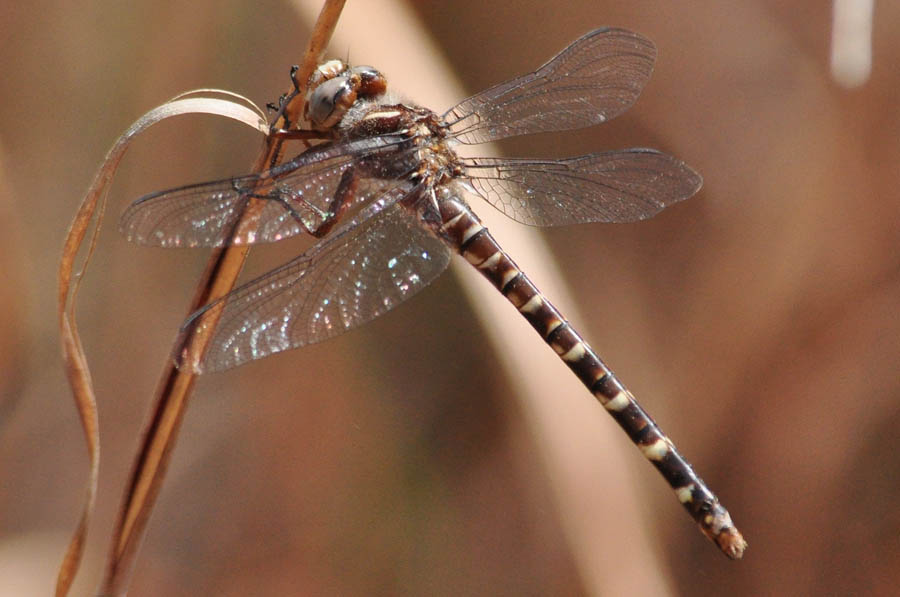
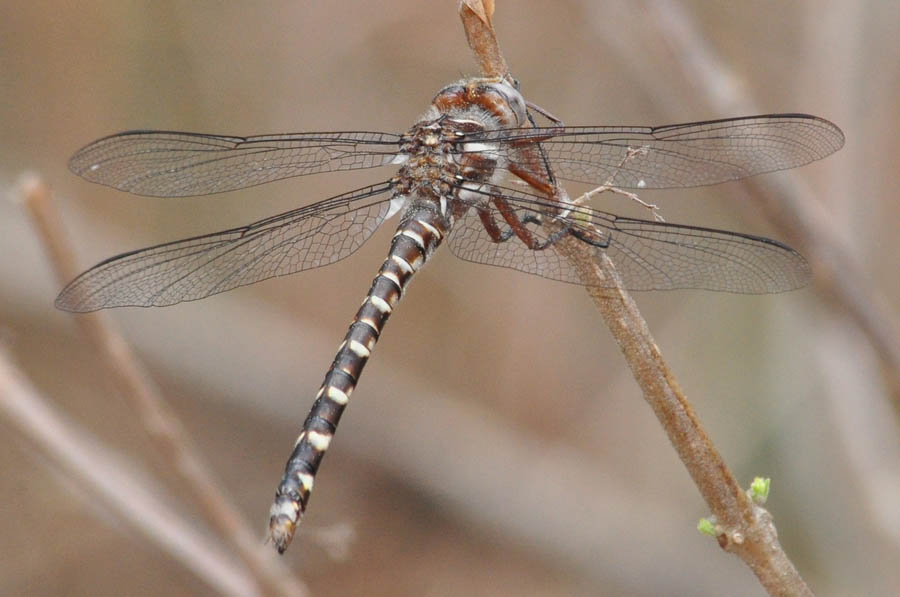
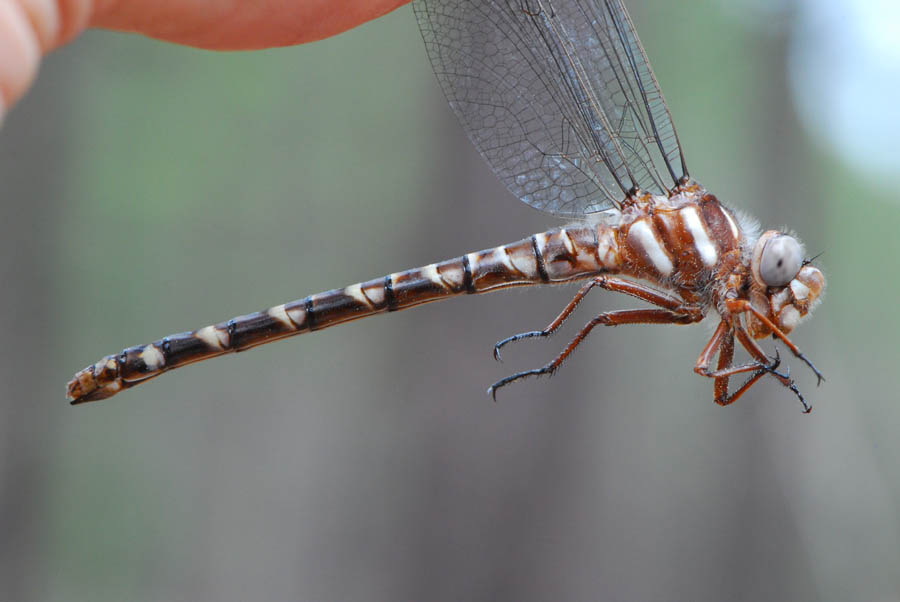
TEXAS: Jasper Co; Angelina National Forest, Boykin Springs Recreation Area - young female - 16 March 2011
31.05983°N 94.28390°W
Tripp Davenport observed a young male at the type locality bog, while Abbott and Lasley photographed another young female at a location about 1 mile west of the Boykin area. Marla & I also observed an adult male Twin-spotted Spiketail near the pipeline bog.
On 17 March 2011, Dad & I met up with Taylor Hall, who had obtained access for us at Temple Inland's Scrappin' Valley Research Forest. Last year, I had searched Scrappin' Valley with Taylor, and found several well maintained bogs with limited surface water. Although I wasn't sure that the habitat was suitable, I felt that there was a good chance that there might be a population of the new species in the area. Within an hour of our arrival, Dad was able to net a young female specimen similar to the one I had photographed on 16 March. This specimen represents the 5th known locale for this species.
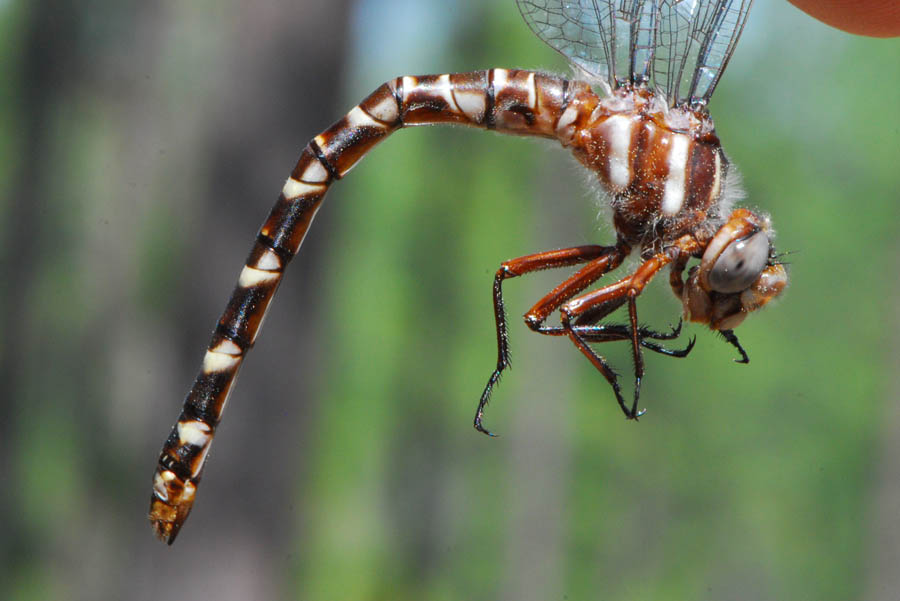
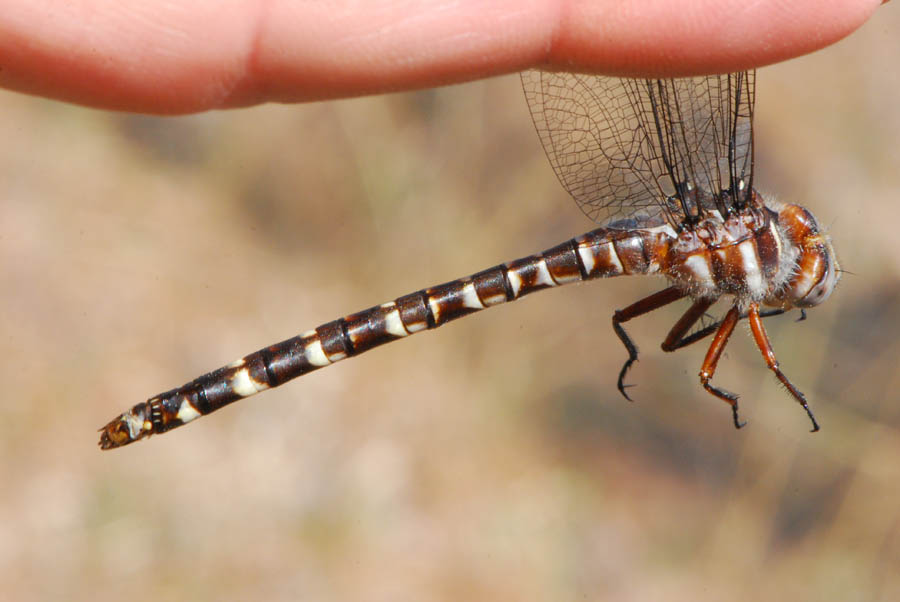
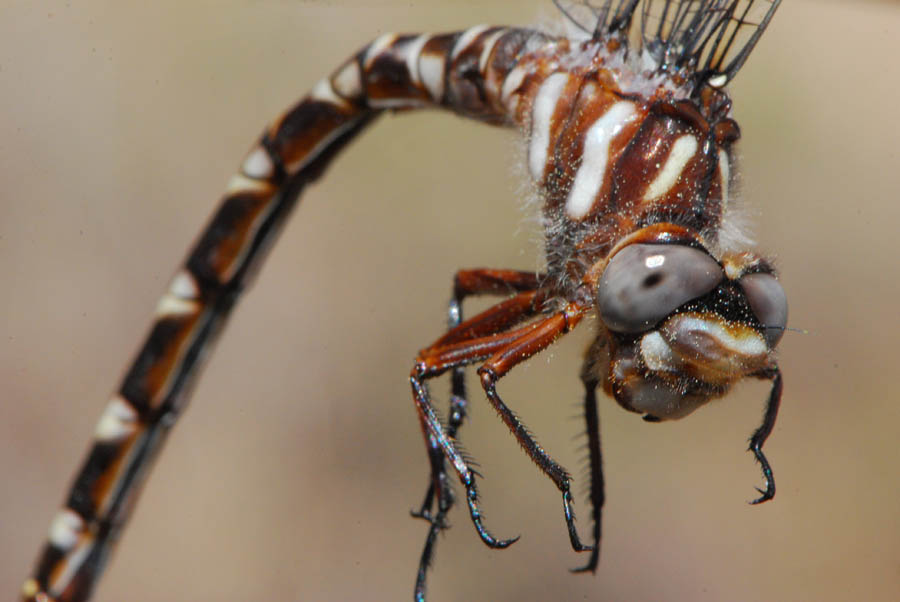
TEXAS: Newton Co; Temple Inland Scrappin' Valley Research Forest - female - 17 March 2011 (new county record)
31.13940°N, 93.79774°W
We also had several tantalizing fly-by's that may have been this species, as well as observed at least 3 different Twin-spotted Spiketails. Abbott & Lasley also collected a specimen at the type locality on the pipeline cut at Boykin Springs.
On 18 March 2011, Dad, Marla, and I met with John Abbot, Greg Lasley, and Steve Shively at Middle Branch Bog. Dad was able to photograph a young female, and we also had 1 definite and 1 tentative fly-by. Meanwhile, Steve Shively's son found a teneral female on the bog, and the group collected a mostly mature male on the bog. As I walked up to the bog to grab a bit to eat at the truck, Marla alerted me that the group was photographing a spiketail on the bog RIGHT NOW! We got a good series of photos, and even got one with the bug photographed perched on a pitcher plant.
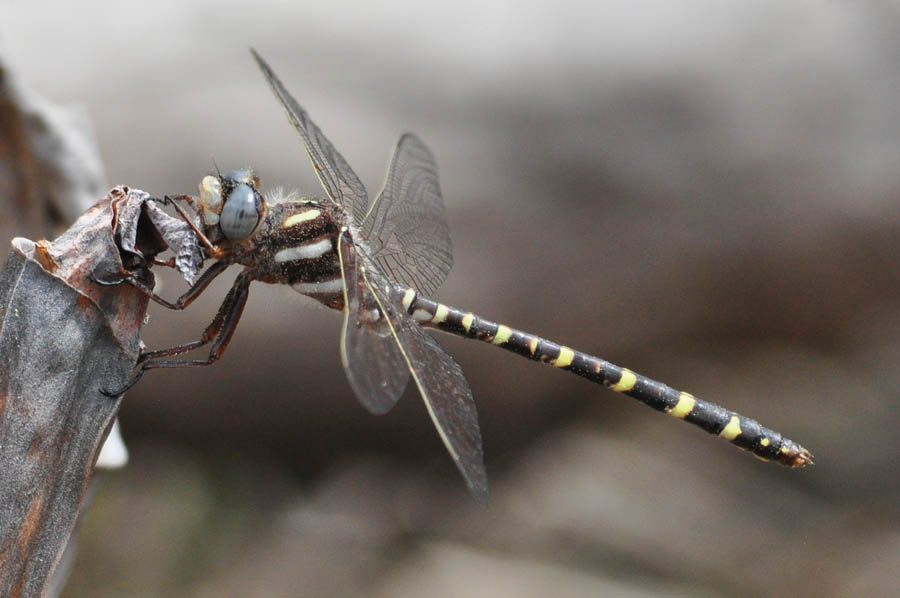
LOUISIANA: Natchitoches Parish; Kisatchie National Forest, Middle Branch Bog - male - 18 March 2011
(note: the small yellow flecks on his thorax are pine pollen)
We then went to check out nearby bogs, and found spiketail at another bog within a mile of Middle Branch. A third bog was fairly dry and didn't produce any sightings, and the fourth bog on my list was overgrown an completely unsuitable.
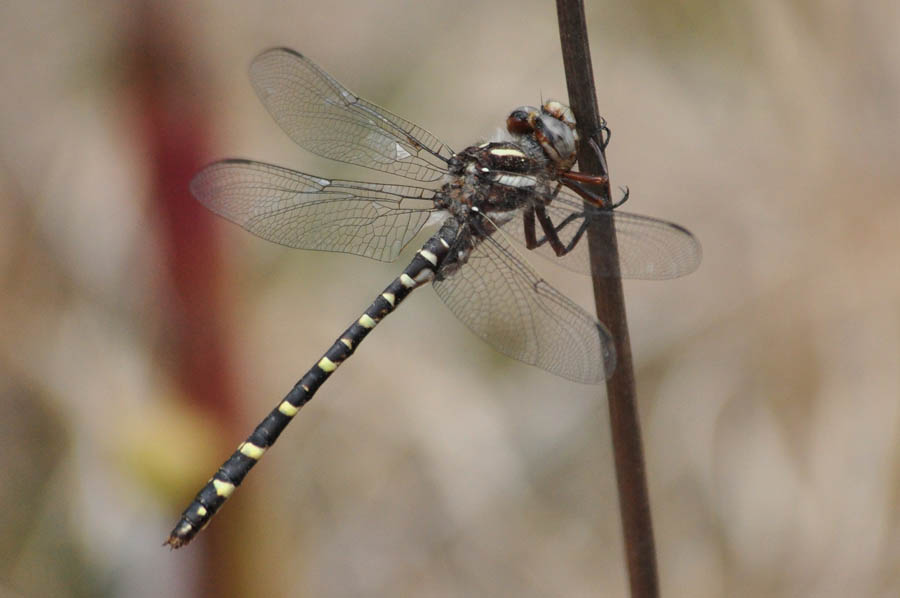
LOUISIANA: Natchitoches Parish; Kisatchie National Forest, FR Bog near Middle Branch - male - 17 March 2011
31.48698°N 93.06547°W
On April 9, 2011, I again spent a day searching the bogs on the Vernon Unit for spiketails. I did have 2 fly-bys by other spiketail species (1 Twin-spotted Spiketail, C. maculata, and 1 Arrowhead Spiketail, C. obliqua), but did not see any of the new species. I also searched bogs on Mayhaw Ridge in the southern portion of the Kisatchie Unit. Habitat here is probably suitable for the new species, but I did not see any individuals. Late in the afternoon, I went up to Middle Branch Bog to photograph the site and was able to locate a single female specimen.
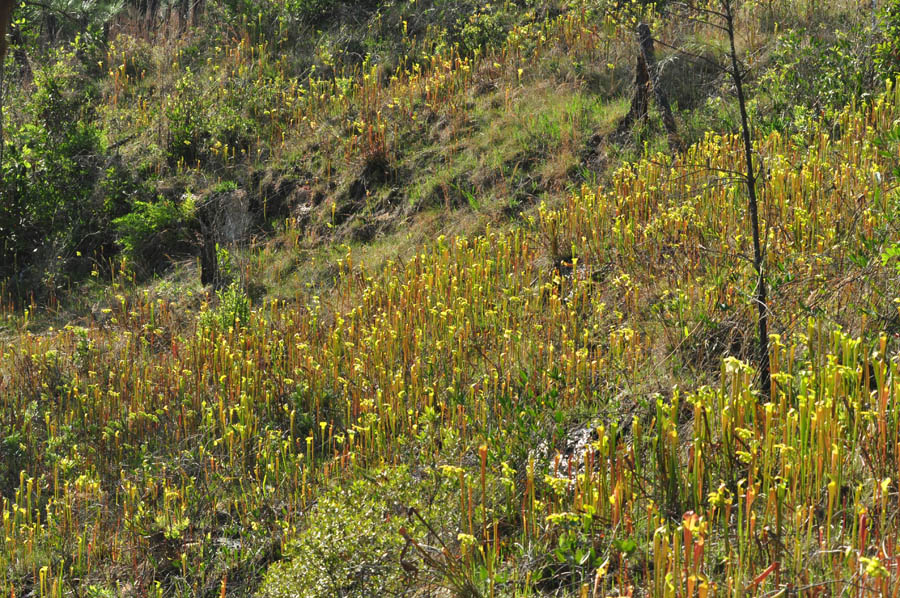
Midde Branch Bog, site of what is likely the largest population of the new spiketail species
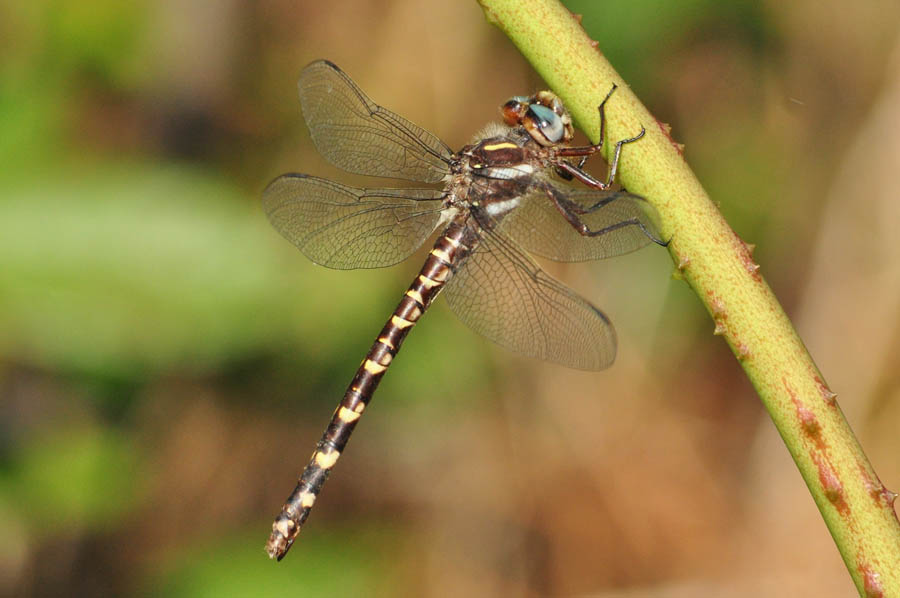
LOUISIANA: Natchitoches Parish; Kisatchie National Forest, Middle Branch Bog - female - 9 April 2011
10 April 2011 found me back at Middle Branch Bog in the morning, hoping to find a mating pair of the new species, but was unsuccessful. I did however find 3 different individuals - 2 males and 1 female. Windy conditions made those dragonflies that were active very sedentary, and I was able to take extreme close-up shots with my macro lens of all 3 specimens that I found.
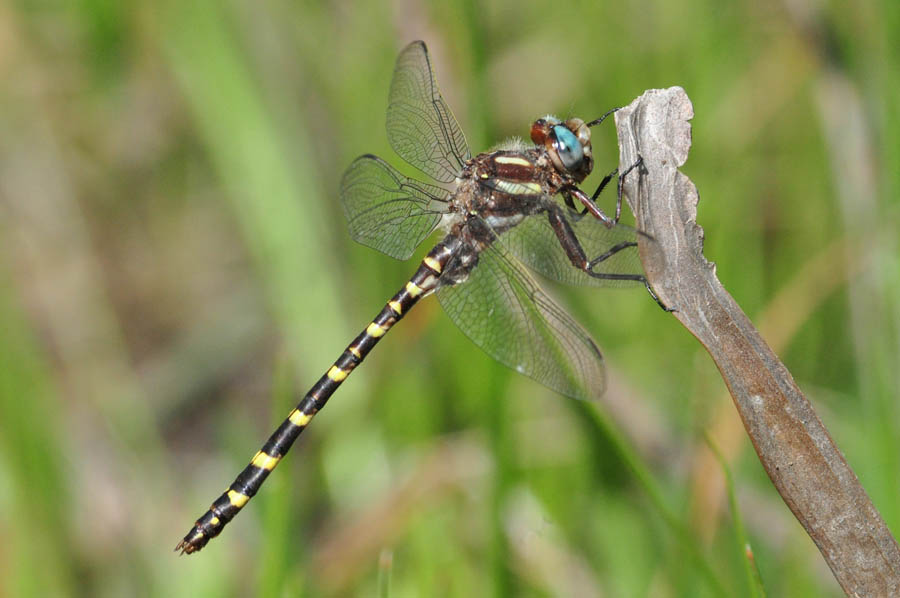
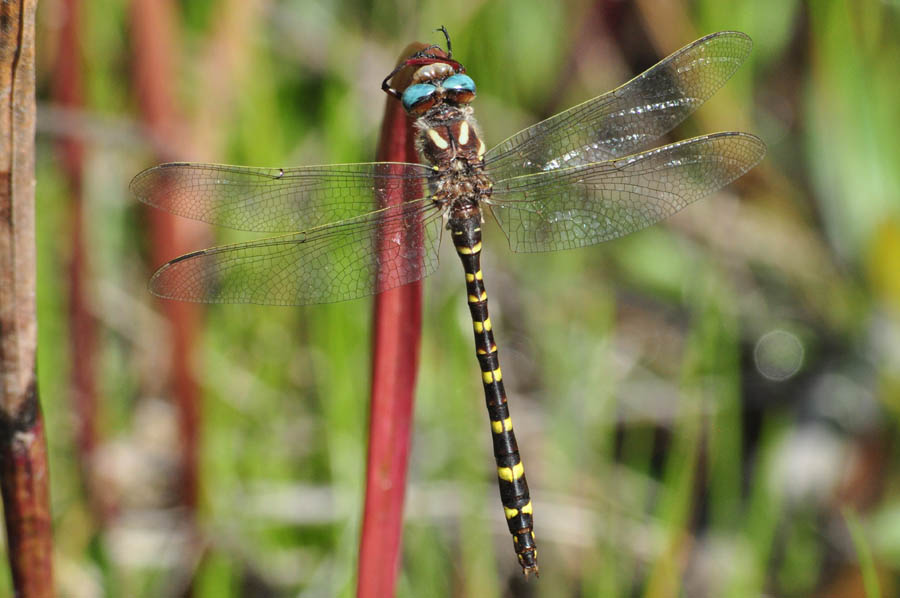
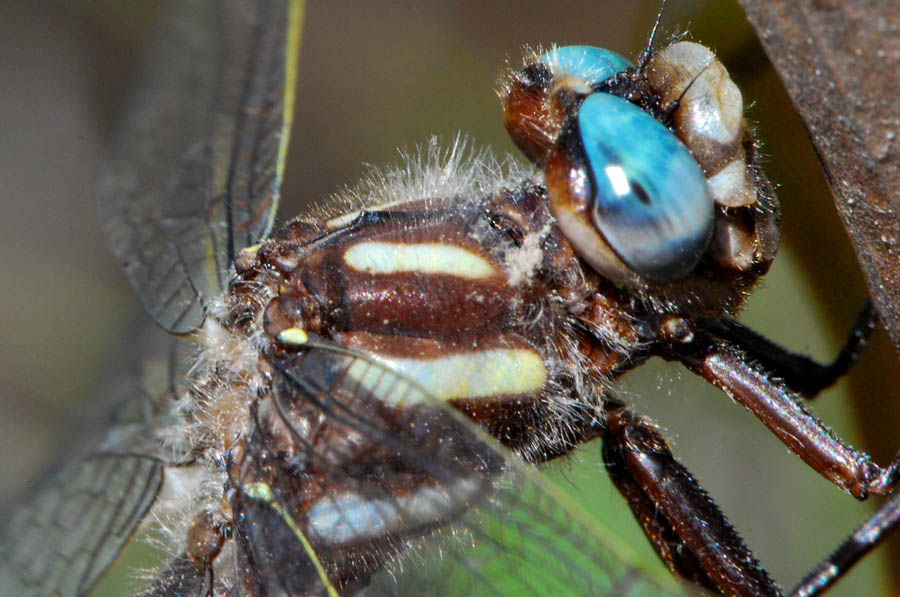
LOUISIANA: Natchitoches Parish; Kisatchie National Forest, Middle Branch Bog - male 1 - 10 April 2011

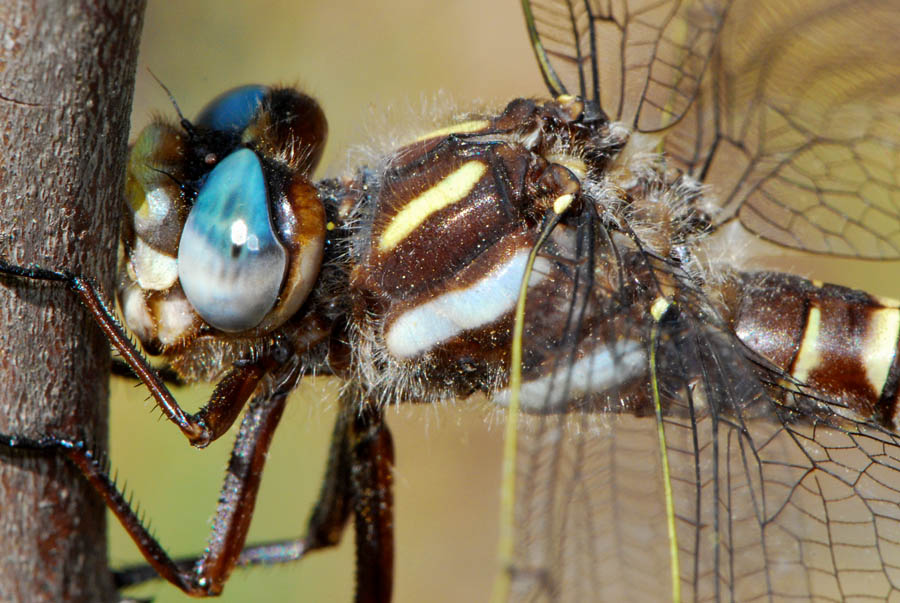
LOUISIANA: Natchitoches Parish; Kisatchie National Forest, Middle Branch Bog - female - 10 April 2011
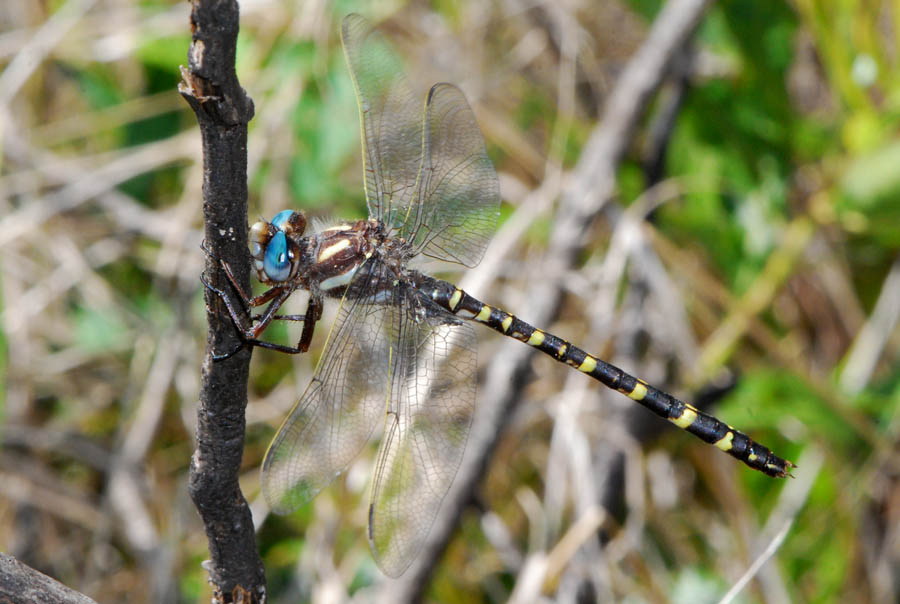

LOUISIANA: Natchitoches Parish; Kisatchie National Forest, Middle Branch Bog - male 2 - 10 April 2011
Later in the afternoon, I again searched the Mayhaw Ridge sites but was only able to locate a single Arrowhead Spiketail (C. obliqua). On 11 April 2011, I spent part of the morning searching the Boykin Springs area, but it was very overcast and threatening rain. I again found only a single Arrowhead Spiketail (C. obliqua), this one a teneral male. Interestingly, as far as I am aware, the specimens I found this weekend were the last specimens seen in 2011.